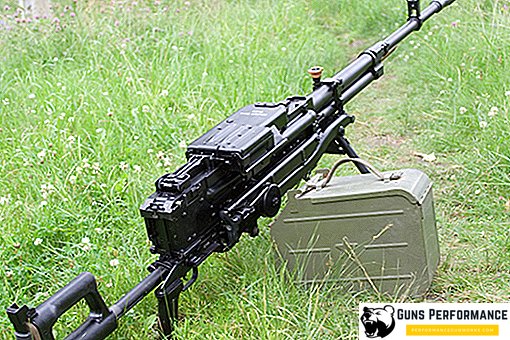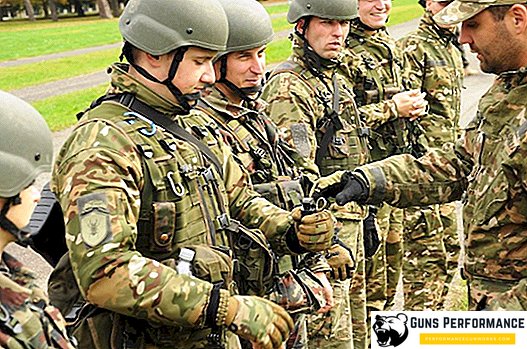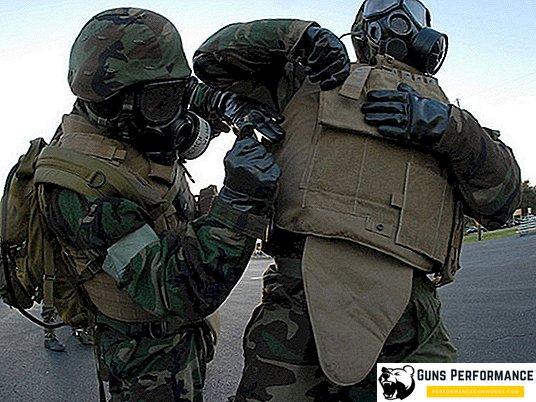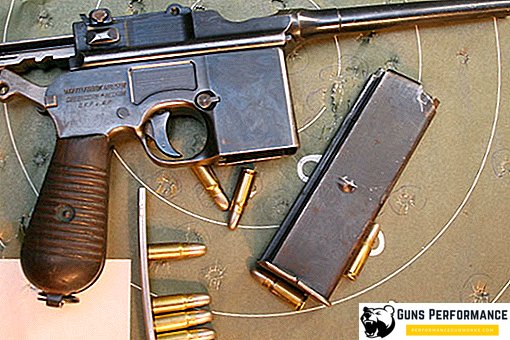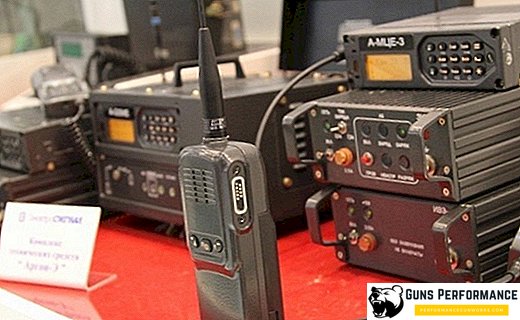An-12 belongs to the outstanding aircraft. Created surprisingly timely, built in sufficient quantity and at a good technical level, unpretentious in operation, easy to learn and having a high payload, the An-12 brought world renown and recognition not only to the team of OKB and O.K. Antonov, but the entire Soviet aviation industry. Since the 1965s, virtually no major event in the history of the country, and in some cases the whole of humanity, was not without the participation of the legendary An-12. It was actively used to assist in times of natural disasters, catastrophes, the development of uninhabited areas, direct participation in coups and armed conflicts, which for many years made the An-12 the main transport aircraft of the planet.
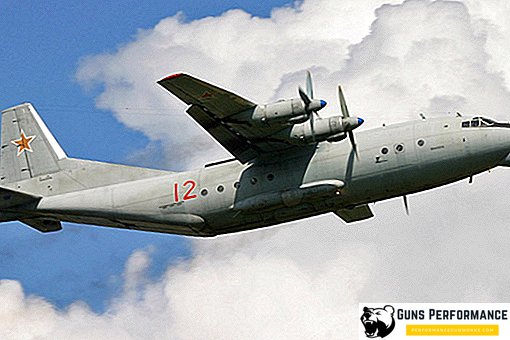
The history of the aircraft
In November 1955, the Resolution of the USSR Council of Ministers issued a decree that instructed GSOKB-473 OK Antonov to develop two airplanes at once: the transport "T" and the passenger "U". The transport aircraft was commissioned to develop V. Gelprin, it was he who became the lead designer for it. According to Antonov, the maximum number of units from the passenger An-10 should be used in the design of the aircraft.

Already in July 1956, the layout of the future aircraft was ready. In December 1957, the prototype en 12 first took to the air. Originally planned to put on the transport aircraft engines NK-4. Plant number 39 in Irkutsk even released in 1958, 2 serial en 12, in which the NK-4 engine was installed. However, the technical description of the engines did not please the KPU Central Committee; it demanded that the AN 12 transport aircraft be fitted with an AI-20 engine developed by OKB-478, A.Ivchenko. That is, a plane from Ukraine should have a Ukrainian engine.

In 1958, they began to state tests of the aircraft, which ended in June 1959. In the same year, the An-12 aircraft was adopted. The aircraft demonstrated high payload. In terms of its capabilities, the An-12 transport exceeded the An-8 aircraft by an order of magnitude. Designers laid in him huge reserves for modernization. That is why the An-12 for many years remained in the military transport aircraft the main transport aircraft.

In December 1961, an airplane 12, equipped with a ski landing gear, flew along the route Moscow-Antarctica-Moscow. The plane also visited the north pole. In June 1965, an 12 transport aircraft was demonstrated at Le Bourget at the XXVI International Aerospace Show. In February 1966, this aircraft began regular freight traffic on the route Moscow - Riga - Paris via Aeroflot. In July 1969, the Vladivostok-Amsterdam line was opened. An-12 aircraft were repeatedly used to transport humanitarian aid to various parts of the planet when disasters, natural disasters and other cataclysms occurred. In 1991-1992, the pilots of the NII VVS set 39 world records in speed and altitude.

An-12 speed demonstrated phenomenal for a transport aircraft. In 1991-1992, the pilots of the NII VVS set 39 world records in speed and altitude. The aircraft over the years of production has been repeatedly upgraded. A total of 1242 aircraft of various modifications were produced (258 in Voronezh, 155 in Irkutsk, 830 in Tashkent). Over the years, 183 AN-12 aircraft were delivered to Poland, Malaysia, Ethiopia, Yugoslavia, Czechoslovakia, China, Cuba, Iraq, Yemen, India, Indonesia, Egypt, Ghana, Guinea, Algeria, Bulgaria and Afghanistan. Some of them still remain in the ranks. They are also used in civil aviation by some airlines.

Flight performance
Aircraft AN-12 has the following technical description:
- Year of creation - 1957.
- The crew is 5-6 people.
- The maximum speed is 780 km / h.
- Cruising speed is 570 km / h.
- The most favorable flight altitude is 8500 m.
- The practical ceiling is 10,200 m.
- Distillation range is 6200 km.
- The range of action is 3600 km.
- The length of the run is 1230 m.
- The length of the run when landing is 1125 m.
- Aeronautical stock of fuel is 1600 kg / hour.
- Consumption of jet fuel during the cruise regime is 2.3 tons / hour.
- The maximum take-off weight is 61,000 kg.
- Normal take-off weight is 55100 kg.
- The maximum landing weight is 61,000 kg.
- The maximum carrying capacity is 17,000 kg.
- The curb weight of the aircraft is 35340 kg.
- The mass of an empty aircraft is 34580 kg.
- Wingspan is 38 m.
- The dimensions of the aircraft in length - 33.1 m.
- The height of the aircraft is 10.53 m.
- The maximum fuel capacity is 22066 kg.
- Engine - theater AI-20M.
- Engine power is 4 * 3128 kW.

Design features
- The An-12 aircraft is a cantilever monoplane with an upper wing of the all-metal construction. It is intended for parachute and landing landing of troop personnel, as well as various military cargoes, including large-size national cargo and the transport of wounded. To carry out loading and unloading operations, the amphibious transport equipment includes a girder, with a loading capacity of 3,000 kg, a TG-12M transporter, and a GL-1500 winch.
- The fuselage is a semi-monocoque, it includes two crew pressurized cabins: aft and bow. The cabin is made with partial reservations to protect the crew. In the stern part there is a cargo hatch with three wings. The middle part of the fuselage is not airtight, it has a cargo cabin. The tricycle landing gear, it retracts into the fuselage. Crew gets visibility through the glazed toe of the fuselage. In the event of an emergency situation and a catastrophe, the crew can leave the plane through two escape hatches: the top one, if an ancillary landing of an 12 is made on the water without a landing gear and the bottom one to leave the plane in the air. The transport and landing variant has 2 AM-23 cannons in the rear part. The load capacity of the An-12 was initially limited to 14.2 tons, a little later it was increased to 17 tons.
- The chassis includes three pillars: two main and one front. The base of the chassis is 9.58 m, and the gauge is 4.92 m. The front landing gear retracts along the flight, the main supports to the axis of symmetry of the fuselage. The supports consist of: interlocked wheels (front), a four-wheeled cart (main), a telescopic shock-absorbing strut, a folding strut, a flap control mechanism, locks, and a harvest-release cylinder. The structure of the main landing gear also includes a strut farm and a stabilizing shock absorber. All supports are equipped with nitrogen-oil shock absorbers. The front support is controlled, it also includes a steering mechanism, a steering cylinder-damper with tracking system. The wheels of the main supports are 1050 × 300 mm in size, they are equipped with inertial anti-skid sensors and disc brakes.
- The design of the wing caisson type, two-spar. Technologically, the wing is divided into five parts: two medium (SCHK), center section, two console parts. By the swing of the trailing edge of the wing there is a two-part aileron, which has internal weight balancing.

Disasters
Despite the reliability of the aircraft, the An-12 often accompanied by various disasters. According to unofficial foreign and domestic data, accidents and serious accidents led to the loss of over 225 aircraft. This number does not include catastrophes that occurred in wartime and in the air force. In many ways, so many accidents are due to the prevalence and long-term operation of the aircraft in various countries of the world. Losses were caused both by the technical condition of the aircraft and by the human factor.

Modifications of the An-12
An-12 had a wide range of modifications. Among them are the following:
- An-12A, An-12AP, An-12P, An-12B, An-12BP, An-12BK - transport aircraft.
- An-12BK-IS - a special military transport aircraft, which is equipped under the control of REP.
- An-12BK-PPS and An-12PP - REP aircraft.
- An-12BP Cyclone - a special aircraft meteolaboratory.




